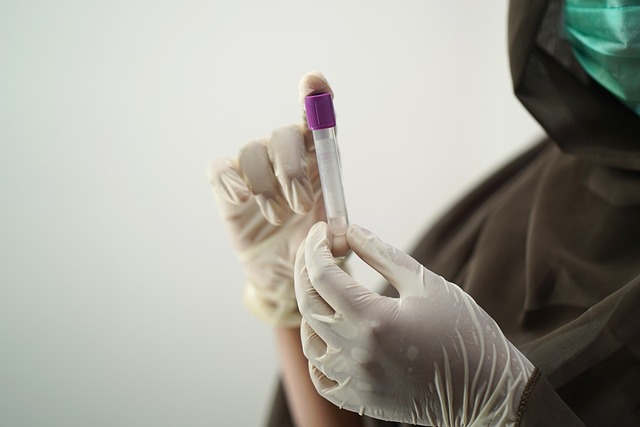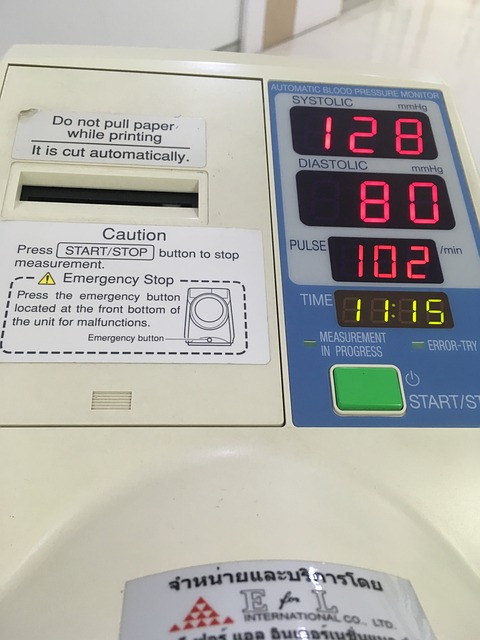Managing diabetes effectively in the UK primarily involves regular self-monitoring of blood glucose levels through diabetes blood tests, which can be performed at home using reliable kits. These kits include a lancet device, a blood glucose meter, and testing strips, allowing for discreet and frequent tracking of glycemic levels to inform dietary, medication, or exercise adjustments. The National Health Service (NHS) provides robust support for this self-monitoring approach, ensuring patients have the necessary tools for optimal health outcomes and to prevent long-term complications associated with diabetes. Home testing facilitates fine-tuning of treatment regimens, particularly for those on insulin or other treatments, leading to improved glycemic control and overall health stability. The term 'Diabetes Blood Test UK' refers to this essential home diagnostic tool within the UK healthcare system, which empowers individuals to actively manage their condition with precision and care. Regular recording of test results is crucial for monitoring progress and adjusting management strategies in collaboration with healthcare providers. Understanding standard blood glucose levels is important for interpreting test outcomes effectively, and modern devices can assist by storing results and providing alerts for out-of-range readings. Utilizing the Diabetes Blood Test UK is a cornerstone of diabetes care, offering real-time data to manage the condition proactively from home.
Managing diabetes at home has become increasingly straightforward with advancements in technology and healthcare. This article delves into the critical role of regular blood tests for individuals with diabetes, emphasizing the importance of self-monitoring for maintaining optimal health. We will explore ‘Diabetes Blood Test UK’ protocols, guide you through a step-by-step process for conducting these tests safely and effectively in the UK, and provide insights on how to interpret your results using home monitoring devices. Understanding and managing diabetes from the comfort of your home empowers you to take charge of your health, leading to better management of this chronic condition.
- Understanding Diabetes and the Importance of Regular Blood Tests at Home
- How to Conduct a Diabetes Blood Test in the UK: A Step-by-Step Guide for Individuals
- Utilizing Home Monitoring Devices: Managing and Interpreting Your Diabetes Blood Test Results
Understanding Diabetes and the Importance of Regular Blood Tests at Home

Managing diabetes effectively requires a proactive approach, and understanding diabetes is fundamental to this process. In the UK, diabetes affects a significant portion of the population, with type 1 and type 2 diabetes being two common forms. Regular blood glucose monitoring is a cornerstone of diabetes management, as it provides critical data on how one’s body is handling blood sugar levels. Diabetes blood tests at home offer a convenient and private way for individuals to track their glycemic control, ensuring they can maintain optimal health outcomes. These self-testing methods allow for real-time feedback, enabling patients to make timely adjustments to their diet, medication, or physical activity accordingly. The UK’s National Health Service (NHS) provides guidance and support for individuals interested in self-monitoring their blood glucose levels. By leveraging diabetes blood test kits available within the UK, people with diabetes can effectively manage their condition, reduce the risk of long-term complications, and improve their overall quality of life. The convenience of home testing also means that individuals can test more frequently, which is often recommended for those on insulin or other medications, as it helps in fine-tuning treatment plans to achieve better glycemic control and health stability.
How to Conduct a Diabetes Blood Test in the UK: A Step-by-Step Guide for Individuals

Regular diabetes blood tests are a crucial aspect of managing diabetes effectively in the UK. For individuals with diabetes, monitoring blood glucose levels is essential for maintaining health and preventing complications. To conduct a diabetes blood test at home, one must first ensure they have all the necessary supplies, including a lancet device, a blood glucose meter, clean fingers or an alternative sampling site such as the forearm, and strips for testing. Begin by washing your hands with soap and water to avoid contamination. Select a site on your finger or alternate site, ensuring it’s not the same spot you used previously to avoid tissue damage. Insert the lancet device into the meter, prime the device if necessary, and use it to gently puncture the skin at the chosen site to obtain a small drop of blood. Apply the test strip to the drop of blood, ensuring the blood fills the testing areas on the strip as indicated by the meter’s instructions. Wait for the result to display on the meter. Record the result along with the date and time, as well as any relevant notes about diet, exercise, medication, or how you feel. It’s important to follow the manufacturer’s guidelines specific to your blood glucose monitoring system and to consult with a healthcare provider if you have any questions or concerns regarding your home diabetes blood tests in the UK. Keeping a log of your results can help you and your healthcare team track patterns and make informed decisions about your diabetes management plan.
Utilizing Home Monitoring Devices: Managing and Interpreting Your Diabetes Blood Test Results

For individuals managing diabetes, regular blood testing is a cornerstone of effective self-care. In the UK, understanding your diabetes blood test results at home has never been more feasible with the advent of home monitoring devices. These tools enable you to track your glucose levels in real-time, providing valuable data to inform dietary decisions, medication adjustments, and overall health management. To accurately interpret these results, it’s crucial to follow the specific instructions provided with your monitoring device. The readings should be recorded consistently, preferably at the same times each day for fasting or pre-meal tests, to establish patterns and trends over time. This data can then be shared with healthcare professionals during regular check-ups, allowing them to tailor treatment plans to individual needs. Additionally, understanding what constitutes normal blood glucose levels—typically between 4 to 7 millimoles per litre (mmol/L) before meals and less than 8.5 mmol/L two hours after eating for those without diabetes—is essential for safe management of the condition. With devices that can store results and even alert you to out-of-range levels, individuals in the UK have access to sophisticated tools that empower them to take charge of their diabetes management right from the comfort of their home, making ‘Diabetes Blood Test UK’ a widely searched term for those seeking to monitor their condition effectively.
managing diabetes at home has become increasingly straightforward thanks to advancements in technology and the availability of comprehensive guidance. Regular blood testing, as outlined in ‘Understanding Diabetes and the Importance of Regular Blood Tests at Home’, is pivotal for individuals with diabetes to monitor their glucose levels effectively. The step-by-step guide provided in ‘How to Conduct a Diabetes Blood Test in the UK’ ensures that even those new to home testing can perform this vital health check confidently and safely. Furthermore, understanding how to manage and interpret test results through ‘Utilizing Home Monitoring Devices: Managing and Interpreting Your Diabetes Blood Test Results’ empowers patients to take charge of their health and make informed decisions about their diabetes management. Incorporating a diabetes blood test UK into your routine care can lead to better long-term outcomes, demonstrating the value of home monitoring in the self-care of this condition. It is clear that with the right knowledge and tools, individuals can effectively manage their diabetes from the comfort of their own homes.
